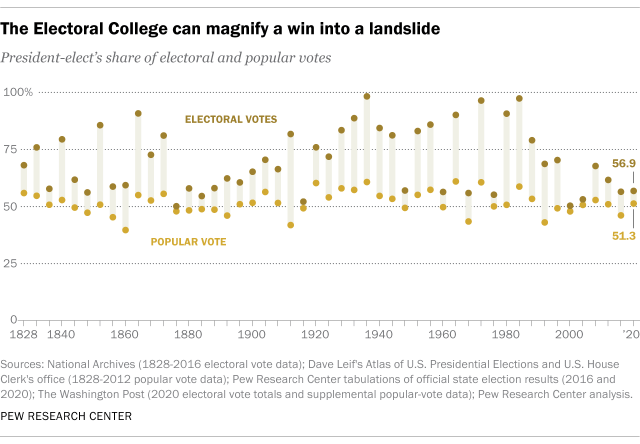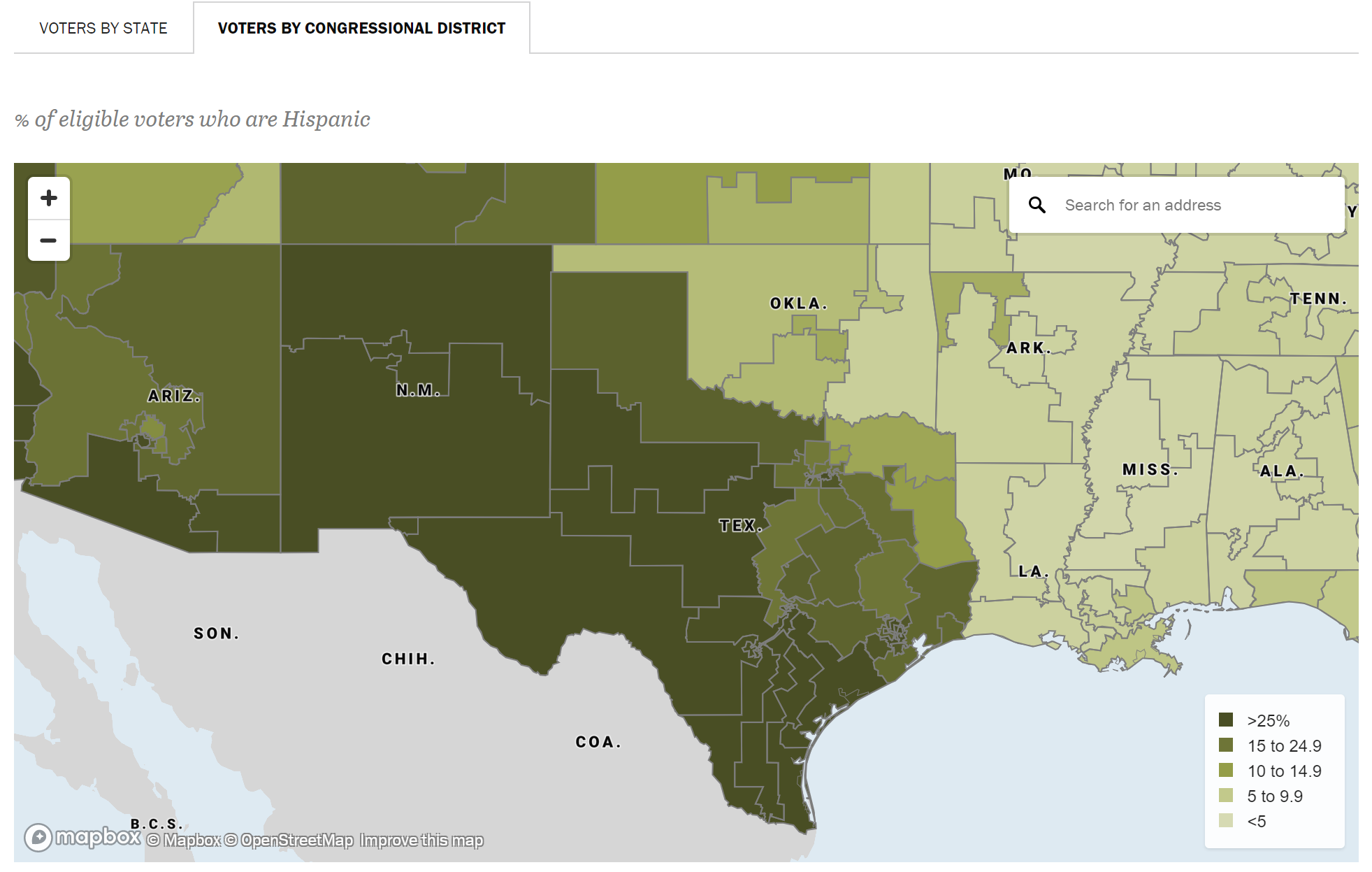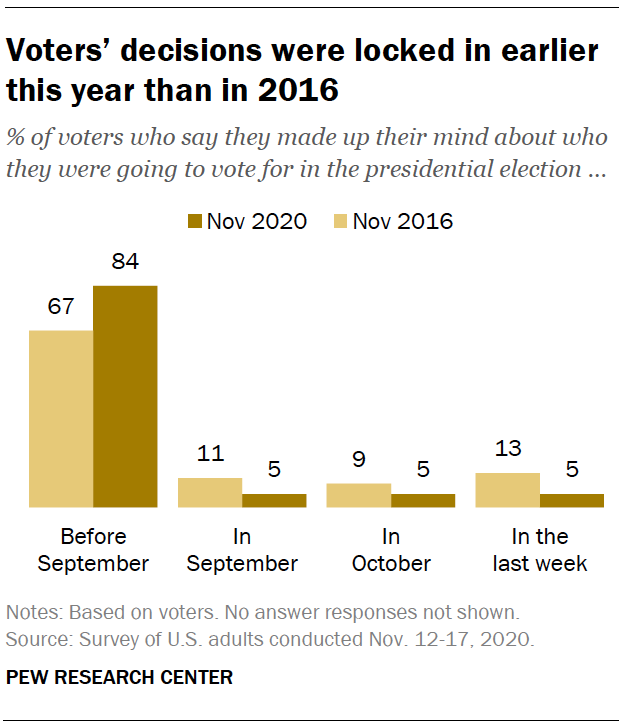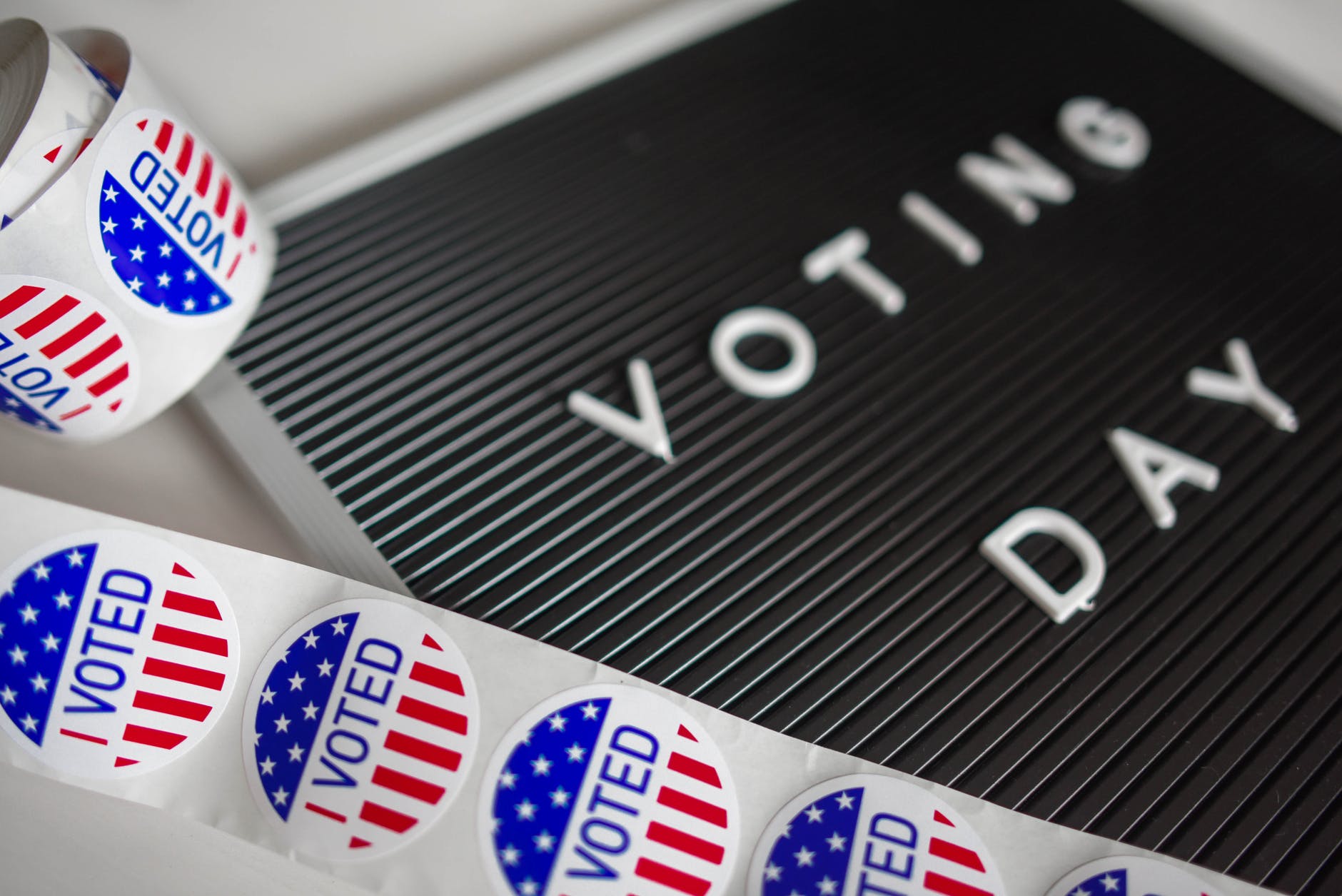This is an introduction for our first series: Analyzing the 2020 Election: A Look at Every Swing State
As we continue to sift through the 2020 election data, analyzing every detail and trying to gain some sort of consensus about what it all means, it’s important to look at what we already know and see if any trends have emerged. And yes, if you were to follow the networks seemingly endless analysis, then we have all come away with the same talking point — that Joe Biden barely squeaked out a win. Yet, let’s pretend that we had every pundit muted during the election and after four days of going about our business, we simply turned on the TV and saw a winner. Because if we look at the raw numbers, we know that Joe Biden did pretty well. After all, he won the most votes of any presidential candidate in history — 81 million — and won by a margin of more than 7 million votes; that’s 4.5% more than Donald Trump. And when looked at historically, that’s the second best margin since 2000, with only Obama’s 2008 win exceeding it (Obama won by 7.3 points).

So why then, with the numbers so glaringly obvious, have we not given credit where credit is due? Well, if anyone reading this was like me, spending hours and hours refreshing their phone those couple nights hoping that the flashy maps would finally reveal a winner, then we all know the same thing — the electoral college is a different beast — and although Joe Biden handily won America’s popularity contest, the actual contest has some rules to follow. That makes winning that much harder.

Personally, I’ll be the first to admit that 2016 caught me completely off guard. Like most of us, I believed Hillary Clinton would come away with a resounding victory — part of that was because the polls said she would win and part of that was simply refusing to believe a celebrity could win the presidency (especially a celebrity as polarizing as Donald Trump) — needless to say, Trump pulled it off anyway. But, if there’s one thing that I did take away from the 2016 election, it’s that I was almost positive that he couldn’t do it again. And… for the most part, I was right. But then again, I wasn’t completely right. While Biden did in fact win the presidency, it wasn’t the electoral landslide that I had predicted. Here’s what I got wrong.
Prediction Failure #1: Trump’s Base Couldn’t Grow
There has never been a President with an approval rating as stagnant as Donald Trumps. As you can see with the FiveThirtyEight.com approval tool below, his average approval rating has hovered just over 40% with very little fluctuation. And while I consistently checked this after every news debacle (and there were a lot between 2016 and 2020), I kept expecting some sort of dip or rise; it simply didn’t happen. This led me to believe one thing — that Donald Trump’s base was written in stone — he wasn’t going to gain any voters and he wasn’t going to lose any either. And out of all of my prediction failures, this one shocked me the most. Donald Trump didn’t just gain more voters in 2020, he gained 10 million more.

Prediction Failure #2: Latino Support
There’s no doubt that the Latino electorate has favored Democrats in the past few elections. However, it’s clear that Democrats overestimated that support this election cycle. Most predicted that Miami-Dade County would continue to go bluer (as it has in every election since 2000) and that Biden would carry Florida. This obviously didn’t happen. In fact, Trump won Florida by 372,000 votes and increased his vote by 12% in Miami Dade County.

While we can speculate about what happened (the media seems to be sticking to the point that labeling Dems as “socialist” resonated with Cuban Americans… and they’re probably not wrong) it’s better to look at the State holistically. We’ll try to do this when we cover Florida.

I’m not sure that I ever believed Texas would go blue. But, what I did believe, is that Texas would be as blue as it has ever been. And while this is true and Texas did in fact go 3% bluer than it was in 2016, it wasn’t nearly the nail biter that I had anticipated. As it turns out, maybe Trumps continual barrage of insults at Mexican Americans wasn’t that damaging. And maybe Mexican Americans (making up 30.4% of eligible voters in Texas) are what we’ve known for a long time… Catholic and somewhat conservative.

Prediction Failure #3: Lots of Conservatives were Voting for Biden
As election day crept ever closer, more and more Republicans were crossing partisan lines and endorsing Joe Biden. And these were no Joe the Plumber endorsements… these were some real heavy hitters — Cindy McCain, Colin Powell, John Kasich, William McRaven (the Navy admiral who oversaw the Bin Laden Raid), almost all of the McCain and Romney election staff, 73 former Republican national security officials — the list goes on and on (Find the full list on Forbes). And although not an official endorsement, former President George W. Bush indicated that he would not be voting for Trump. Yet, even with all of these endorsements, it appears to have only slightly resonated with GOP voters on the ground. And not to say that it didn’t do anything; as with any election, a small drop in any voting block can easily make or break an election outcome (i.e. Trump’s support among white men was slightly lower than 2016; we can reasonably assume that this is one of many factors that contributed to a Biden win).
So what’s my failure? Well, I simply assumed that GOP support for Biden would be substantially more significant considering the amount of GOP endorsements he received. And as I previously stated, I don’t doubt that they helped Biden, I just doubt by how much. In retrospect, I should have put more stock in how very few “undecided” voters actually existed. If these endorsements did anything, they probably only reinforced the beliefs of those that had already made up their mind.

(And just to consider some other alternative arguments, maybe libertarians were the ones that actually flipped to Biden considering how little votes Libertarian Candidate Jo Jorgensen received compared to Gary Johnson in 2016. But that’s a BIG unknown and we’ll probably never get a real answer (it’s very hard to prove which party actually suffers from libertarian candidates). Some good articles on this can be found here and here)
Prediction Failure #4: Trump was a 2016 Anomaly
As a millennial, I’ve been able to vote in only four presidential elections (to include 2020). And while that certainly isn’t a lot of elections in the eyes of an Xer or a Boomer, I can say with certainty that 2016 was unlike any of the others. Maybe it was the candidates, maybe it was the misinformation, or maybe it was the fact that campaigning had finally moved online, but either way, we can all agree that the outcome was surprising. And for many reasons, I thought that outcome to be some sort of anomaly. If Trump were to win in 2020, he would have to increase African American support (he did), increase (electoral) Hispanic support (he did), and increase his base (he did). So, if Trump did do all of these things, why didn’t he win? Well, Biden was able to chip away at other voting blocks and turn out more voters; it’s that simple. But, Trump proved that his 2016 win was certainly no fluke and it definitely wasn’t “some sort of anomaly” as I had originally thought. Yes, Joe Biden won in 2020, but Trump proved that he could motivate voters too. He won the most votes of any Republican presidential candidate in history and, as it turns out, his base didn’t stop growing in 2016 after all.
So which States are we Analyzing?
Now that I’ve shared my big four prediction failures, it’s time to dig a little deeper into the 2020 election. For purposes of this series, we’ll analyze a different swing state every week and see what was predicted vs what actually happened. And based off what we know so far, there’s no single factor that contributed to a Biden win and there’s no political pundit in the world who can say with certainty that x or y made it happen. Instead, all we can do is look at trends, averages, and facts and try to come to some sort of consensus.
Swing States:
- Florida
- Texas
- Georgia
- Iowa
- Ohio
- North Carolina
- Pennsylvania
- Arizona
- The Blue Wall
Please remember that this is simply an analysis. I encourage all readers to use the interactive tools listed on this website in order to draw their own conclusions.
